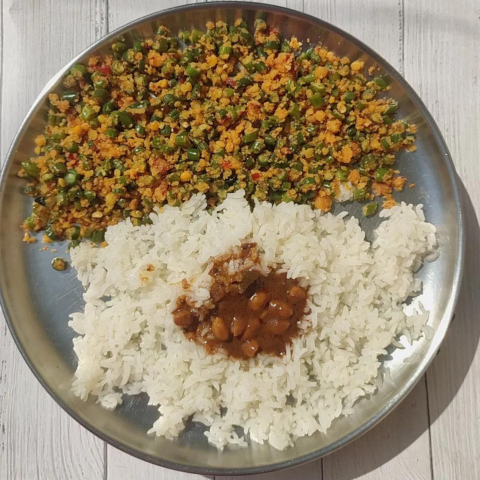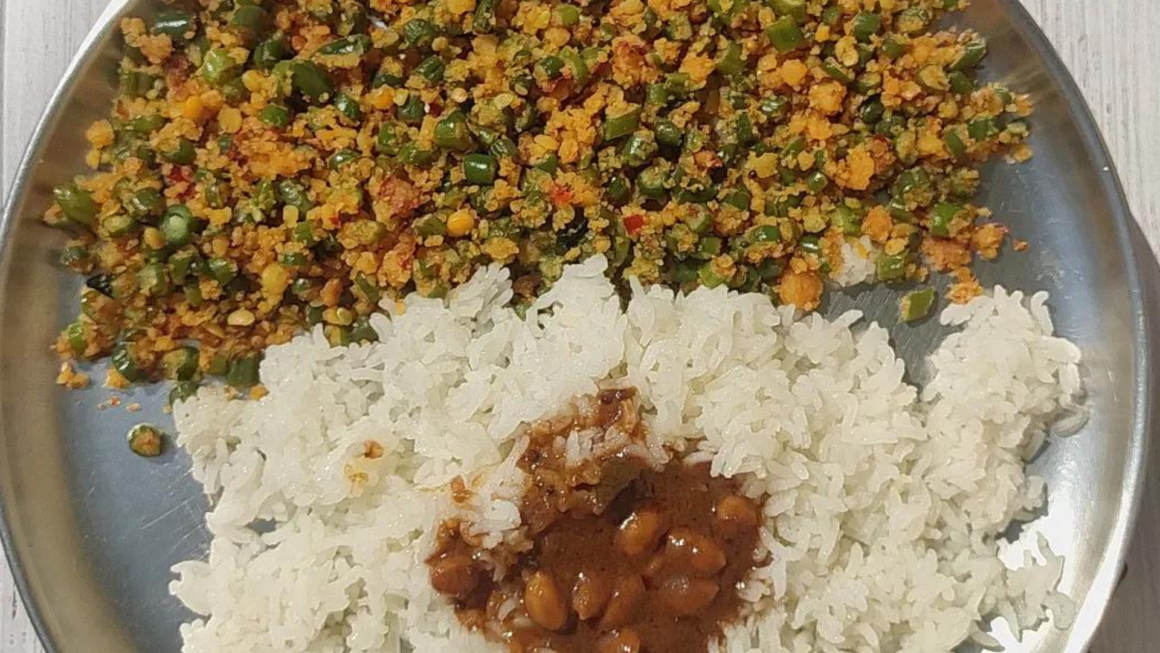The cherished classic lunch pairing of Vethakozhambu and Paruppu Usuli from the Tamil Iyer community holds a special place in my heart. Throughout our lives, we experience the same dish prepared by different hands, yet there’s always that one unforgettable taste, a person and a day that lingers in our memory. For me, it’s the combination of Vethakozhambu and Usuli, and the person is my beloved Mami.
Mami was the one who introduced me to the subtle flavours in a dish, creating combinations that were simply otherworldly. One such revelation was the pairing of groundnut and ajwain in kozhambu. She was uncompromising in her attention to the smallest steps, like adding the tadka to the sambhar only at the end and not at the beginning.
She taught me to savour the food, to gently mix the usuli with hot rice and ghee, bit by bit, and then immerse it in the honey-like vethakozhambu. It’s through these cooking lessons that I still feel a connection with her. Her influence on my culinary journey is profound.

Vethakozhambu and Paruppu Usuli
Ingredients
Paruppu Usuli:
- Tuvar Dal – ½ cup
- Chana Dal – ½ cup
- Red Chillies – 10
- Oil – ¼ cup
- Curry leaves – few
- Cooked beans – 3 cups
Vethakozhambu:
- Tamarind – Big lemon sized
- Til Oil – ½ cup
- Mustard Seeds – 1 tbsp
- Ground Nuts – ½ cup
- Curry Leaves – few
- Sambhar Powder – ½ cup
- Salt to taste
- Ajwain – 1 tbsp
- Jaggery – 2 tbsp
- Water – 3 cups
For Tempering:
- Coconut Oil – 2 tbsp
- Mustard seeds – 1 tbsp
- Urad Dal – 2 tbsp
Method:
- Start by soaking the dal and red chillies in water for an hour. Simultaneously, soak the tamarind in a separate bowl of water for the same duration. After an hour, extract the juice from the soaked tamarind, discarding the leftover pulp.
- Next, heat a kadai and add oil. Once the oil is hot, add the mustard seeds and groundnuts. When the nuts start to split, stir in the sambhar powder, ensuring the flame is low to prevent burning. Stir this mixture gently, incorporating the sambhar powder into the oil.
- Next, add salt and curry leaves, followed by the tamarind extract. You might need to add more water. Let the mixture simmer until it reduces to half of its initial volume. Towards the end of this process, add jaggery and boil the mixture for another minute. Once the oil starts to separate, your ‘Vethakozhambu‘ is ready.
- While the Vethakozhambu is reducing, turn your attention back to the soaked dal. Drain the water and grind the dal coarsely.
- In a separate pan, heat some oil. Add the coarsely ground dal, keep the flame low, cover the pan, and let it cook undisturbed for about 5 minutes. After this time, remove the lid and begin to stir the dal mixture. Keep stirring occasionally, and after about 10 minutes, the dal mixture will be thoroughly cooked and look crumbly.
- At this point, add the cooked beans and the required amount of salt, and blend both ingredients well. Prepare a tadka with mustard seeds and urad dal, and add it to the Usuli. Now your favourite Saturday lunch of Vethakozhambu and Paruppu Usuli is ready to be enjoyed!
Watch this recipe here – Vethakozhambu and Paruppu Usuli

Archana Priya is a homemaker, a passionate maven of Indian traditional cuisine and holds a Master’s degree in Bioinformatics. Her belief is that while recipes may be mere stepping stones, it is the skilled hands of the cook that turn these stepping stones into precious gems.
She owes her culinary prowess to a myriad of expert cooks from her family and friends circle. Thanks to their teachings and influence, she has not only developed an appreciation for the subtle intricacies of traditional flavours but also mastered the art of recreating them.
Translations and detailed descriptions are provided to give a better understanding of the story to people from different cultural backgrounds across the globe.

